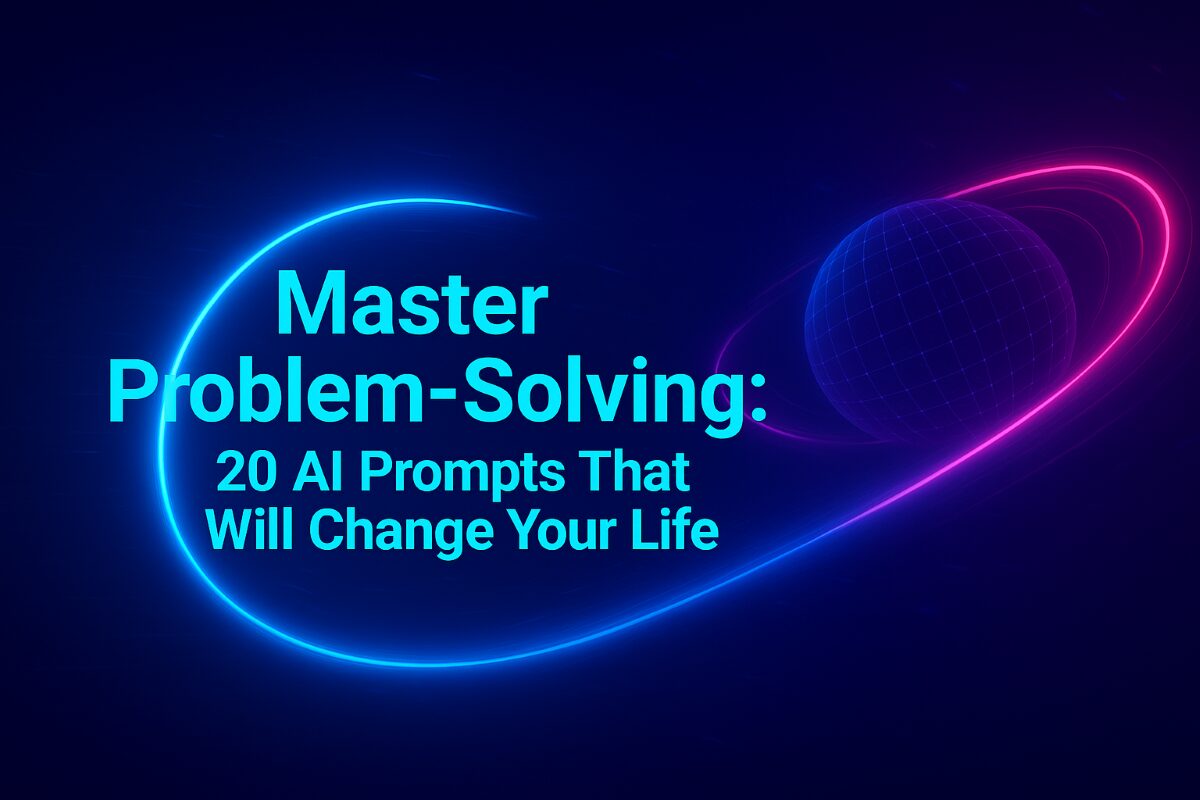In today’s fast-paced world, problem-solving is a crucial skill. Whether you’re a student, professional, or simply someone looking to tackle everyday challenges, ChatGPT can be an invaluable tool. But to truly unlock its potential, you need to know how to ask the right questions. This article 20 ChatGPT Prompts That Will Blow Your Mind LLM prompts will help you for problem-solving, making them easy to understand and implement. Use these LLM prompts for your convenience.
Why Use ChatGPT for Problem-Solving?
ChatGPT is an AI language model that can provide creative solutions, brainstorm ideas, and help you analyze complex problems. By using the right prompts, you can leverage its capabilities to:
- Generate diverse perspectives: Explore different angles and approaches to a problem.
- Break down complex issues: Simplify complex problems into manageable steps.
- Brainstorm solutions: Quickly generate a list of potential solutions.
- Analyze data and information: Extract insights from large amounts of text.
20 ChatGPT Prompts for Effective Problem-Solving: LLM Prompts
Here’s a detailed breakdown of each prompt, explained in simple terms:
- 1. Fishbone Diagram:
- Prompt: “Generate a fishbone diagram to analyze the causes of [problem].”
- Explanation: Visually identify the root causes of a problem by categorizing them into major areas.
- 2. SWOT Analysis:
- Prompt: “Conduct a SWOT analysis for [situation or project].”
- Explanation: Evaluate strengths, weaknesses, opportunities, and threats.
- 3. MECE Principle:
- Prompt: “Apply the MECE principle to [problem] to ensure all aspects are mutually exclusive and collectively exhaustive.”
- Explanation: Divide a problem into distinct, non-overlapping categories.
- 4. Force Field Analysis:
- Prompt: “Perform a force field analysis to identify driving and restraining forces affecting [problem].”
- Explanation: Analyze the forces that are either helping or hindering a change.
- 5. Decision Matrix:
- Prompt: “Create a decision matrix to compare [options] using weighted criteria.”
- Explanation: Evaluate options by assigning weights to different criteria.
- 6. First Principles Thinking:
- Prompt: “Apply first principles thinking to break down [problem] into fundamental truths.”
- Explanation: Deconstruct a problem to its basic elements and rebuild solutions from there.
- 7. Analogous Reasoning:
- Prompt: “Use analogous reasoning to find solutions from unrelated domains for [problem].”
- Explanation: Apply solutions from one area to another.
- 8. Inversion Technique:
- Prompt: “Use the inversion technique to solve [problem] by reversing assumptions.”
- Explanation: Solve problems by considering the opposite of the desired outcome.
- 9. SCAMPER Method:
- Prompt: “Apply the SCAMPER method to modify [idea or product].”
- Explanation: Use Substitute, Combine, Adapt, Modify, Put to another use, Eliminate, Reverse to generate new ideas.
- 10. Cost-Benefit Analysis:
- Prompt: “Conduct a cost-benefit analysis to quantify tradeoffs between [options].”
- Explanation: Evaluate the costs and benefits of different options.
Unlock the Power of ChatGPT: 20 Golden Rules for Writing Effective Prompts
- 11. Hypothesis Testing:
- Prompt: “Use hypothesis testing to validate assumptions about [problem].”
- Explanation: Test assumptions with data-driven methods.
- 12. Pre-Mortem Analysis:
- Prompt: “Conduct a pre-mortem analysis to anticipate failure points for [project].”
- Explanation: Imagine the project has failed and identify potential reasons.
- 13. Lateral Thinking:
- Prompt: “Use lateral thinking to solve [problem] with unconventional approaches.”
- Explanation: Generate creative solutions by thinking outside the box.
- 14. TRIZ Method:
- Prompt: “Apply TRIZ principles to leverage patterns of inventive solutions for [problem].”
- Explanation: Use a systematic approach to solve problems by identifying and resolving contradictions.
- 15. OODA Loop:
- Prompt: “Apply the OODA loop (Observe, Orient, Decide, Act) to solve dynamic problems in [situation].”
- Explanation: A decision-making process for dynamic situations.
- 16. Prototyping:
- Prompt: “Build rapid prototypes to test concepts for [problem].”
- Explanation: Create quick, low-fidelity versions of solutions to test their viability.
- 17. Blue Ocean Strategy:
- Prompt: “Apply the Blue Ocean Strategy to create uncontested market space for [product or service].”
- Explanation: Create new market space by differentiating your offering.
- 18. Root Cause Analysis:
- Prompt: “Conduct a root cause analysis to identify underlying causes of recurring issues in [process].”
- Explanation: Find the fundamental reasons behind problems.
- 19. Counterfactual Reasoning:
- Prompt: “Use counterfactual reasoning to explore ‘what if’ scenarios for [historical problem].”
- Explanation: Consider alternative outcomes by changing past events.
- 20. Six Thinking Hats:
- Prompt: “Apply the Six Thinking Hats technique to analyze [problem] from different perspectives.”
- Explanation: Explore a problem from six different angles (logical, creative, emotional, etc.).
Conclusion: 20 ChatGPT Prompts That Will Blow Your Mind – LLM Prompts
ChatGPT is a versatile tool for problem-solving, and by using these 20 prompts, you can unlock its full potential. Remember to adapt and refine your prompts based on your specific needs and the responses you receive. Start using these techniques today to tackle any challenge that comes your way.
This article is designed to be informative, easy to understand, and SEO-friendly, making it a valuable resource for anyone looking to improve their problem-solving skills with ChatGPT. Remember to adapt and refine your prompts based on your specific needs and the responses you receive. Happy prompting!
- 7 AI Prompting Tips to Write Killer AI Prompts (That Actually Work)
- How to Prompt an AI Receptionist Like a Pro: AI Receptionist Prompting
- Advanced Strategies for Controlling LLM Output with Prompts: Fine-Tuning Your AI
- Mastering Contextual Prompting: Giving Your AI Context & Brain
- How to Refine LLM Prompts for Perfect Output: Prompt Refinement Techniques & The Power of Iteration



